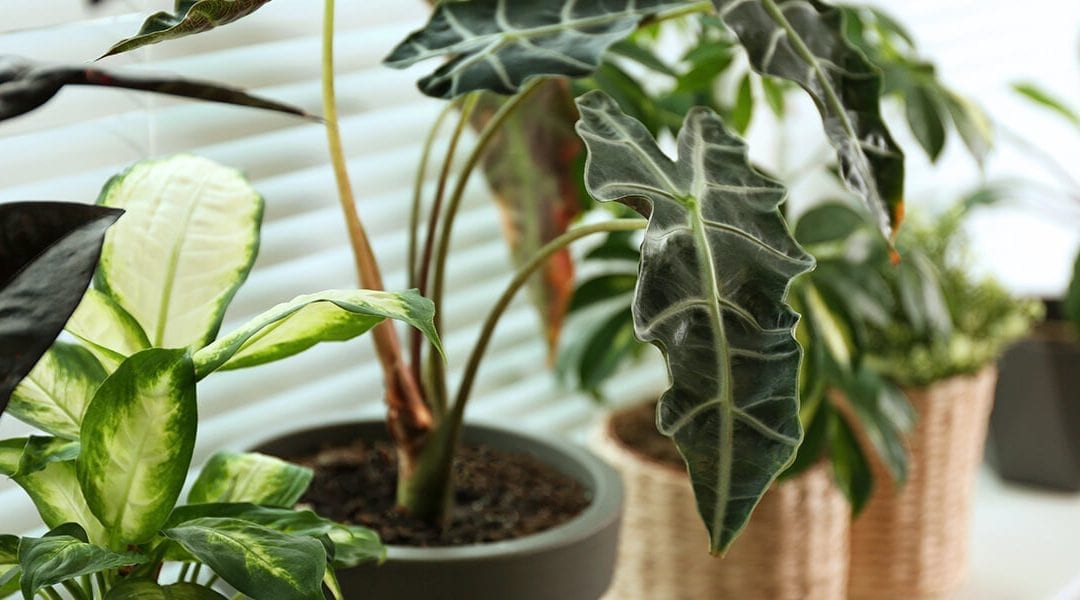Nothing can improve the atmosphere of our homes like a houseplant. The greenery can transform a room into a tropical paradise, and those gorgeous green leaves boost the air quality by producing oxygen and filtering out harsh chemicals. Many studies show that plants improve our concentration, mood, sleep, and creativity. Houseplants have always been popular—but here are the ones trending for 2021 and our tips on how to care for them!
Houseplants are like pets, except they often take care of us just as much as we take care of them.
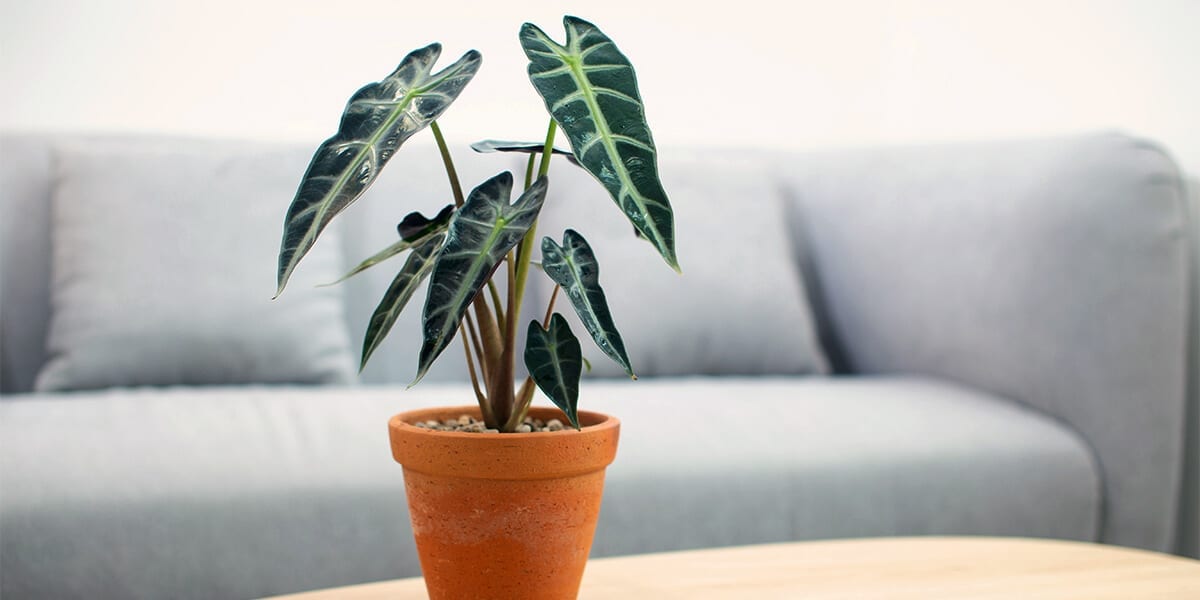
Alocasia
The striking leaves of these plants can easily become the centerpiece of your living decor. Originating in subtropical Asia and eastern Australia, there are many varieties of Alocasia, from exotic types with striking color patterns and variation, to classically refined and elegant. Alocasia comes in a wide variety of colors from almost black to chartreuse to pale green. Their favorite soil is a 1:1:1 ratio of potting mix, peat, and perlite or coarse potting sand. Keep it moist by watering once the top 1-2 inches are dry and place these plants in indirect, bright light. Their mesmerizing leaves can get scorched in direct sun.
Bromeliad
The most common variety of bromeliads have colorful bracts around central flower stems. You’ll find them in tropical colors of fuschia, orange, and pineapple yellow. Many types of bromeliads grow on tree branches in the tropics. That means they like well-draining soil, such as a 2:1:1 mix of potting soil, perlite, and orchid bark, or something similar. The leaves of bromeliads form cups that need to be watered from above. These cups hold water and release it slowly to the roots. Keep them full by watering once a week, and replace the water if it gets stagnant. Varieties with soft leaves prefer low light, while those with stiff leaves need bright, indirect rays.
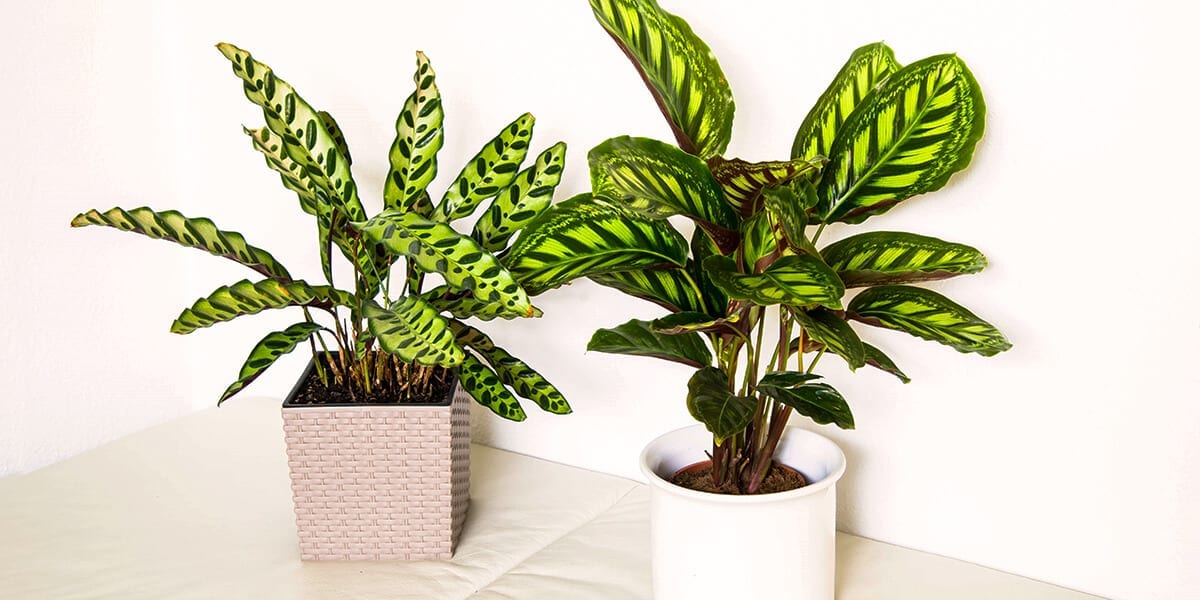
Calathea
Calatheas are trending this year for their stunning aesthetics. The leaves are so beautiful that you’d think an artist could have painted them. The Calathea ornata features pink and white pinstripes on large green leaves. The Calathea makoyana has green-striped leaves with purple undersides. Most of the varieties like indirect, bright light. As for soil, they need a peaty potting mix that retains moisture. Water about once or twice a week, depending on your conditions, to keep the soil moist but not soggy.
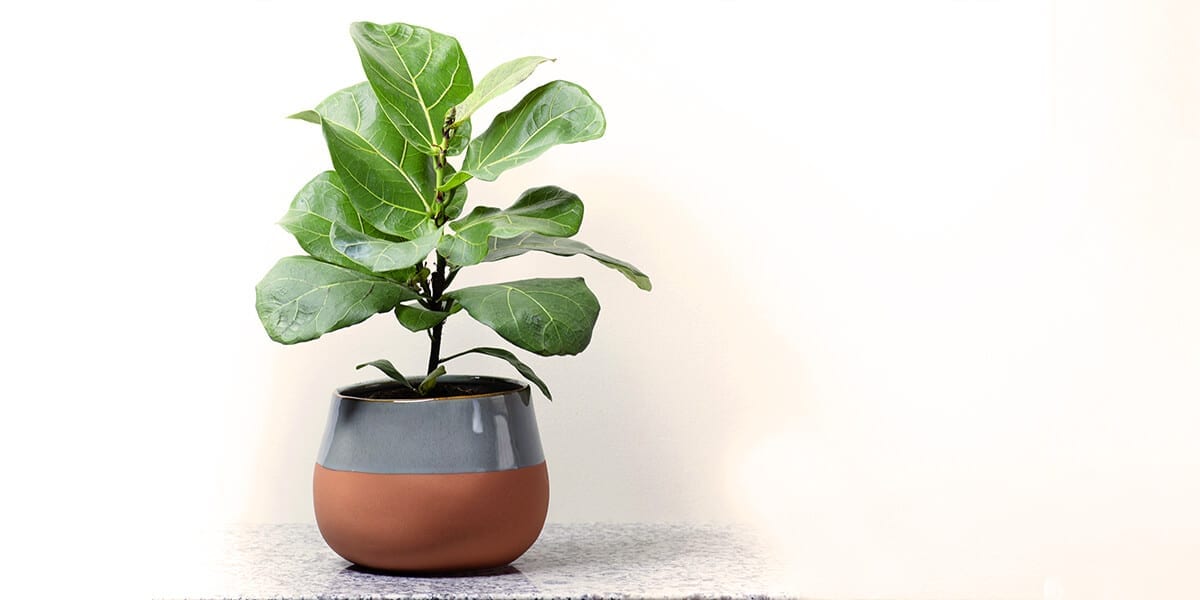
Ficus
The Fiddle Leaf Fig tree is one of the trending houseplants in this family. It has a handsome trunk with violin-shaped leaves. The Weeping Fig is one of its close cousins, which is just as attractive, but with bushier, smaller leaves. They prefer bright-filtered light near a sunny window and like a thorough watering when the top inch of soil is dry. But don’t let them sit in a wet saucer. If the edges of leaves turn brown, it’s asking for more H2O. If you see dark brown spots, it’s telling you to put your watering can away. A ficus can be finicky—and may benefit from advanced care tips—but if you promptly correct any watering mistakes, you’ll be rewarded with a beautiful indoor tree.
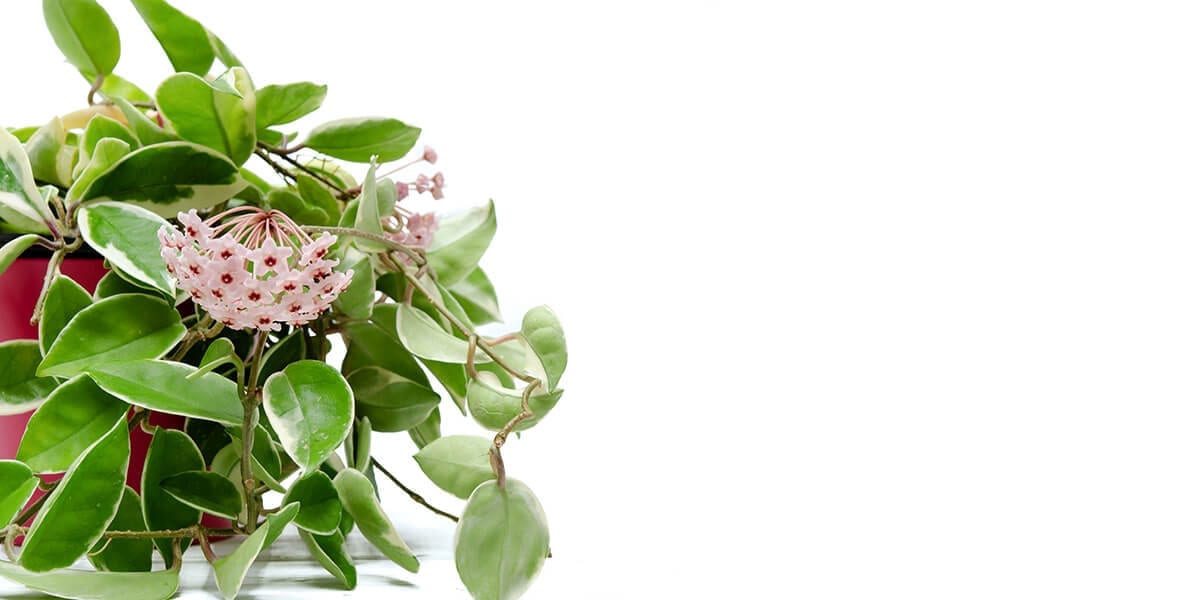
Hoya
While ficus are tall and stately, hoyas like to let it all hang down. Their trailing leaves are ideal for any shelf or hanging pot. Some have beautiful tendrils like the Rope Plant, while others, like the Carnosa, have classic glossy lance-shaped leaves. Most of them produce sweetly perfumed red or white flowers. They like rich, well-draining potting soil, such as a potting mix with some perlite or orchid bark, and about 6 hours of indirect sunlight per day. Give them a drink once the top layer of soil dries out.
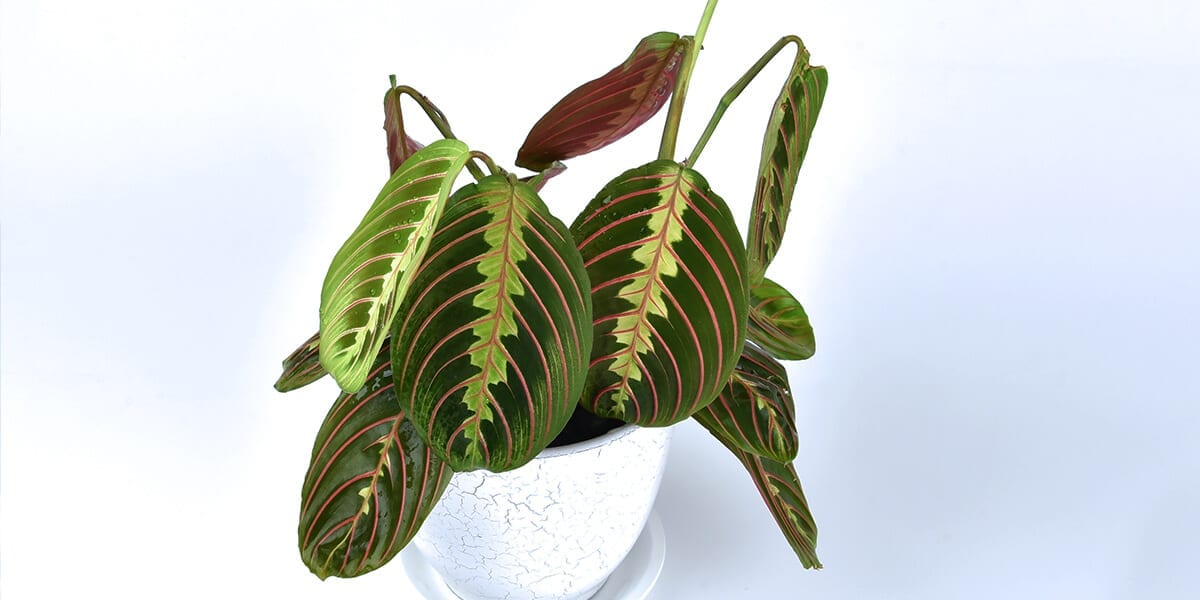
Maranta
Maranta is another trending plant from the tropics with artistic leaves. You may find yourself lost in contemplation at the mesmerizing pink stripes and multiple shades of green on each leaf. They are also called Prayer Plants because they fold their leaves together at night, almost like two hands in prayer. They enjoy a well-draining potting mix, moist soil, and bright, indirect light. Water about every 1-2 weeks, letting the soil dry out halfway between waterings.
Monstera
While marantas amaze you with color, it’s the shape of monstera leaves that wins your heart. One variety has been dubbed the Swiss Cheese Plant because of the attractive holes in their large leaves. The leaves of all varieties have some kind of perforation. This allows them to reach out for more sunlight while using less energy to form a solid leaf. From an aesthetic angle, it gives them a breezy, tropical vibe. They like nutrient-rich potting soil, medium to bright indirect light, and they need water once the top 2-4 inches of soil are dry, or about once per week, depending on your conditions.
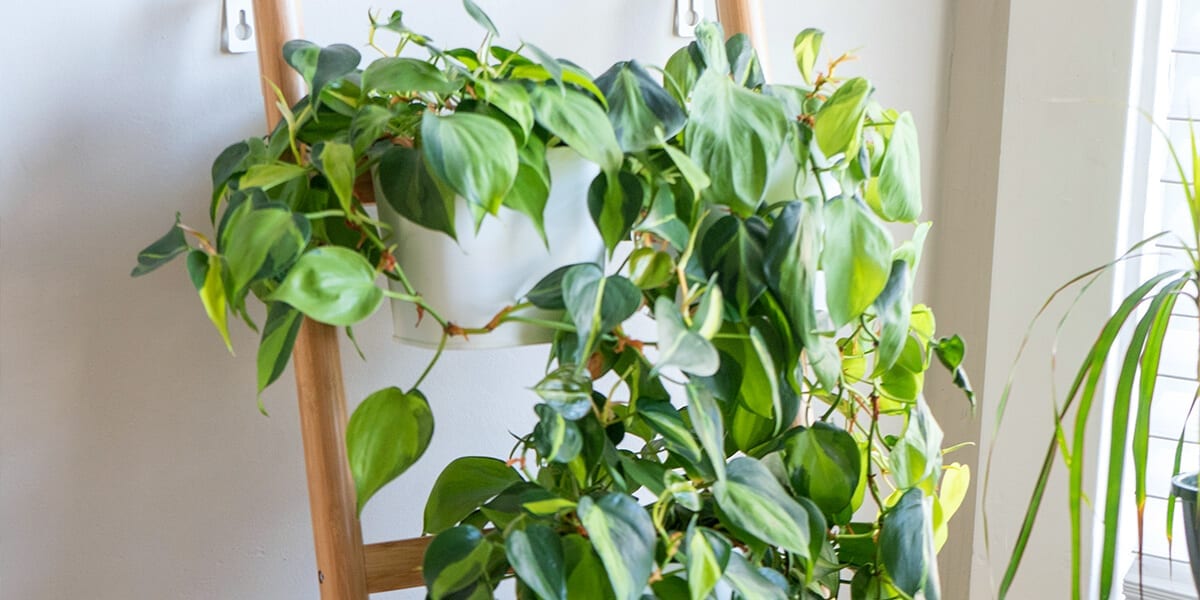
Philodendron
Philodendrons encompass a large family of easy-to-care-for houseplants. The heart-shaped philodendron is a popular trailing plant that made it onto NASA’s list of the best air-purifying houseplants. It has solid green, spade-shaped leaves, while other varieties have variegated green and yellow leaves. They like indirect, bright light and should be watered when the top inch of soil is dry. Overwatering is often a more significant risk than underwatering these plants. If you let them dry out too much, the leaves become droopy but will quickly recover with a good drink. Rhaphidophora tetrasperma is another popular houseplant with a trailing habit like a philodendron but perforated foliage like a monstera.
Schefflera
The Umbrella Tree is one of the most famous schefflera houseplants. They are a beautiful plant for any floor location with their slender stems and umbrella-like whorls of leaves. You’ll also find that its close relative, the Dwarf Umbrella Tree, is a charming substitute! They are easy to care for and are usually not vulnerable to houseplant pests. Give them bright, indirect light and water once the soil in the pot has mostly dried out. Yellow leaves that are falling off is a sign of overwatering. Since they are vulnerable to root rot, make sure to dump excess water from the saucer after watering and use a peat-moss-based potting mix when repotting. When you feel it needs to be pruned, cut off leggy limbs and prune it to the size that you want.
Houseplants are like pets, except they often take care of us just as much as we take care of them. They silently filter toxins from the air and reduce our stress levels even when we don’t realize it. Houseplants change the very life of our homes, enhancing the vitality of everyone around them. This year, you have no shortage of beautiful options, from stately indoor trees to cheerful tropicals and plants with leaves as attractive as flowers. For all of your houseplant needs, visit our garden centers in Bloomingdale and Carpentersville, and check out our Winter Garden Guide for more inspiration this season or stop by our Houseplant Festival!
Platt Hill Nursery is Chicago’s premier garden center and nursery.
Additional Articles of Interest:
3 Great Houseplants To De-Stress Your Home And Purify The Air
Houseplants that You Can Move Outdoors in the Summer
Perfectly Pet-Safe Houseplants

